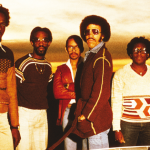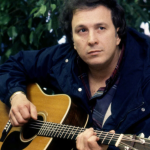“Living for the City” – Stevie Wonder
- music
- June 25, 2024

“Living for the City,” released in 1973, is one of Stevie Wonder’s most powerful and socially conscious songs. Featured on his critically acclaimed album “Innervisions,” this track combines Wonder’s musical genius with a poignant narrative that addresses systemic racism and urban poverty in America.

Musical Composition and Style:
“Living for the City” is a rich tapestry of funk, soul, and R&B, showcasing Stevie Wonder’s innovative approach to music. The song is characterized by its prominent use of synthesizers, particularly the Moog and ARP, which create a dense, immersive soundscape. Wonder’s use of the Clavinet and Fender Rhodes electric piano further enhances the track’s distinctive sonic texture.
The song’s structure is dynamic and evolving, beginning with a steady, rhythmic groove and building up to a dramatic crescendo. Wonder’s passionate vocal delivery adds depth and intensity, making the listener feel the weight of the story being told. The track also includes a powerful spoken-word segment that vividly depicts the protagonist’s harrowing journey, adding a dramatic and theatrical element to the music.

Lyrics and Themes:
The lyrics of “Living for the City” tell the story of a young black man from the rural South who moves to the city with dreams of a better life, only to encounter harsh realities and systemic discrimination. The narrative unfolds in vivid detail, capturing the struggles of the protagonist and the injustices he faces. Lines like “His hair is long, his feet are hard and gritty” and “To find a job is like a haystack needle” paint a stark picture of the challenges faced by many African Americans during that time.
The spoken-word section in the middle of the song is particularly impactful. It describes the protagonist’s wrongful arrest and imprisonment, highlighting the brutal and dehumanizing aspects of the criminal justice system. This part of the song serves as a powerful indictment of institutional racism and the systemic barriers that perpetuate inequality.

Commercial Success and Critical Acclaim:
“Living for the City” was both a commercial and critical success. It reached number 8 on the Billboard Hot 100 chart and number 1 on the R&B chart, demonstrating its wide appeal. The song also earned Stevie Wonder a Grammy Award for Best Rhythm & Blues Song in 1974, further solidifying his reputation as a groundbreaking artist.
Critically, the song has been lauded for its bold social commentary and innovative production. It is often cited as one of the standout tracks on “Innervisions,” an album that is considered one of the greatest of all time. “Living for the City” is frequently included in retrospectives of Stevie Wonder’s best work and remains a powerful example of music’s ability to address social issues.

Cultural Impact and Legacy:
The impact of “Living for the City” extends beyond its initial release. It has been covered and sampled by numerous artists, reflecting its enduring influence. The song’s themes of social justice and its portrayal of the African American experience have kept it relevant in discussions about race and inequality.
Stevie Wonder’s “Living for the City” is more than just a song; it is a profound social statement that continues to resonate with listeners. Its blend of compelling narrative, innovative music, and passionate delivery make it a timeless classic. The song stands as a testament to Wonder’s artistry and his commitment to using his music as a platform for social change.
Conclusion:
“Living for the City” by Stevie Wonder is a powerful musical narrative that sheds light on the struggles and injustices faced by African Americans. Its combination of masterful composition, vivid storytelling, and unflinching social commentary make it one of Stevie Wonder’s most significant works. The song’s enduring legacy and continued relevance highlight its importance as a piece of musical and social history.
Video:











